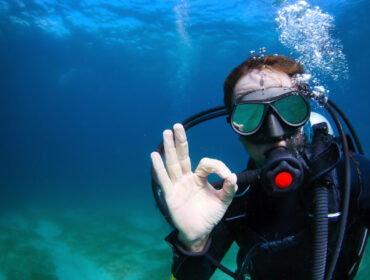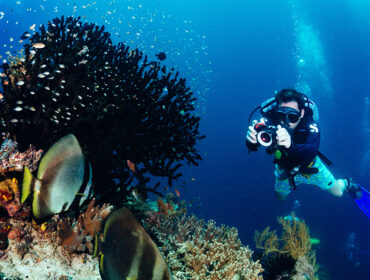There are a few different kinds of decompression stops/ pauses in ascent, which a scuba diver needs to make to allow for the expelling of inert gasses to minimize the possibility of the gasses forming micro-bubbles which in turn can cause Decompression Sickness or DCS. This article looks closer at the Safety Stops, Deco Stops, and Deep Stops.
Decompression Stop/Deco Stop
A decompression stop pauses a diver’s ascent to allow the body to expel dissolved gases, primarily nitrogen, in the blood. Without decompression stops, these gases would expand, becoming bubbles and causing decompression sickness.
While a safety stop is in essence a kind of ‘decompression stop’, if the diver has remained within the NDL (no-decompression Limits) throughout the dive, the safety stop is more of a precautionary measure rather than a mandatory stop unlike a decompression dive stop. Omitting a decompression stop puts the diver at significant risk of nitrogen bubbling and DCS. While a safety stop is always carried out at 15-20 feet for 3 to 5 minutes, a decompression stop varies based on the depth and time the diver spent at a particular depth, and that diver would perform a Deco Stop and a Safety Stop at 5m (15ft).
Decompression stops are a critical part of deep water diving, with the length and depth of such stops varying depending on the depth and length of the dive. Typically, more than one decompression stop is needed, and many divers use dive computers to calculate their decompression stops and alert them when and how long they should stop.
Most recreational diving discourages divers from intentionally doing decompression dives (i.e., dives beyond the NDLs of dive tables). This is because on a single tank dive, the chances of a diver running out of air while having to perform long decompression stops is highly likely, putting the diver at risk of either running out of air or skipping the deco stop and possibly ending up with DCS.
Deep Stop
A relatively new concept introduced into scuba diving, a deep stop is a pause or a series of pauses on the ascent before any mandatory stops (either safety or deco). According to DAN (Divers Alert Network) an additional deep safety stops adds a significant margin of safety versus only making the normal 20 -15ft safety stop. A deep stop is said to help prevent micro-bubble formation in a diver’s bloodstream and slows down their ascent.
Usually, newer dive computers incorporate Deep Stops into their algorithms and alert divers when to take a Deep stop. However, for those recreational divers wanting to calculate when to take one manually, divide your max depth by two and do a 30-second to a-minute stop there. A deep stop is a 30-60 second stop at 50% of the maximum depth for the dive and should be taken by anyone doing decompression dives or diving near the NDLs.
Aquaviews Tip: A Deep Stop is not a substitute for your Deco Stop or Safety Stop. A diver should always adhere to the originally calculated or dive computer prompted decompression stops in addition to the deep stop.




